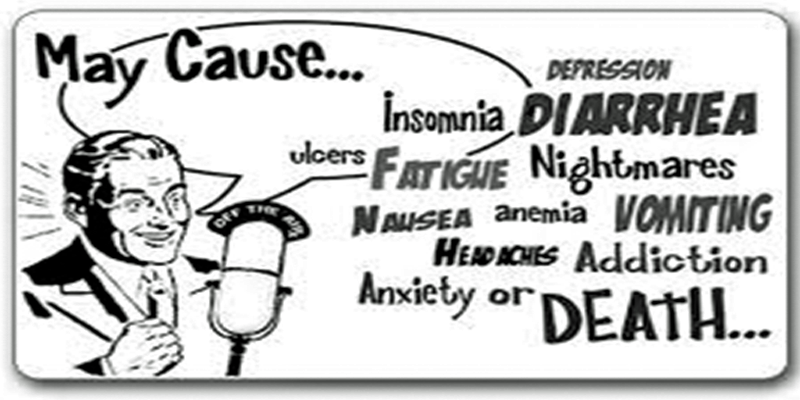The TV commercial.
So I’m watching TV, and one of those lawyer commercials come on. You know the ones: “If you or a loved one took X medication and then got Y side effect, you may be eligible to join a class action lawsuit. Call (800) 555-5555 to see if you qualify.”
The medication.

Photo credit: www.invokanahcp.com
The medication in question is INVOKANA®, an SGLT2 inhibitor that advises physicians that it can help “relieve the burden of sugar for your patients.”
You’ve probably seen commercials for it. “INVOKANA® (canagliflozin) is indicated as an adjunct to diet and exercise to improve glycemic control in adults with type 2 diabetes mellitus.”
The patients’ website (www.invokana.com) says, “Janssen wants to help you explore cost support options for INVOKANA®.”
After seeing that commercial, I think I’ll pass – even if I do happen to develop type 2 diabetes.
The possible resulting conditions.
According to the commercial, people who have used INVOKANA® may have experienced amputation or genital gangrene.
Amputation is bad enough. It’s also not uncommon in patients suffering from diabetes. But genital gangrene? I’d never even heard of that before.
Is genital gangrene really a thing?
Genital gangrene isn’t listed as a potential side effect on either of the two INVOKANA® websites. [Read the patient warnings here or the physician warnings here .] The closest conditions listed are urosepsis and pyelonephritis (kidney inflammation as a result of a urinary tract infection) and genital mycotic infections (genital yeast and/or bacterial infections).
WikiPedia hasn’t heard of it, either. If you search for “genital gangrene,” the results show that it can be a result of genital infections like those listed above.
So I googled “genital gangrene.” In those results, I found this story on upi.com: “FDA warns class of diabetes drugs may cause genital gangrene.” It turns out that the technical term is Fournier’s gangrene or necrotizing fasciitis. Published in August 2018, the article cites studies showing that:
The condition, which is called necrotizing fasciitis and is referred to as Fournier’s gangrene, developed in 12 patients after they took the drugs [there are two types ofINVOKANA®] between March 2013 and May 2018, the FDA said in an advisory Wednesday. All seven men and women were hospitalized, with one patient dying.
Almost everyone has had one or another of those infections, but I’ve never heard of anyone getting genital gangrene – much less dying – as a result.
The mental picture I didn’t want to have.
As soon as the commercial was over, I started writing this post. It was the only way I could get the mental picture of genital gangrene out of my head. (And, no, I didn’t do a Google image search on it.)
You can thank me later.
I don’t know about you, but I don’t have any desire to control my blood sugar at the expense of developing necrotizing fasciitis of the nether regions. And I’m guessing the smiling people in the photo won’t be smiling if one of them gets it, either.


